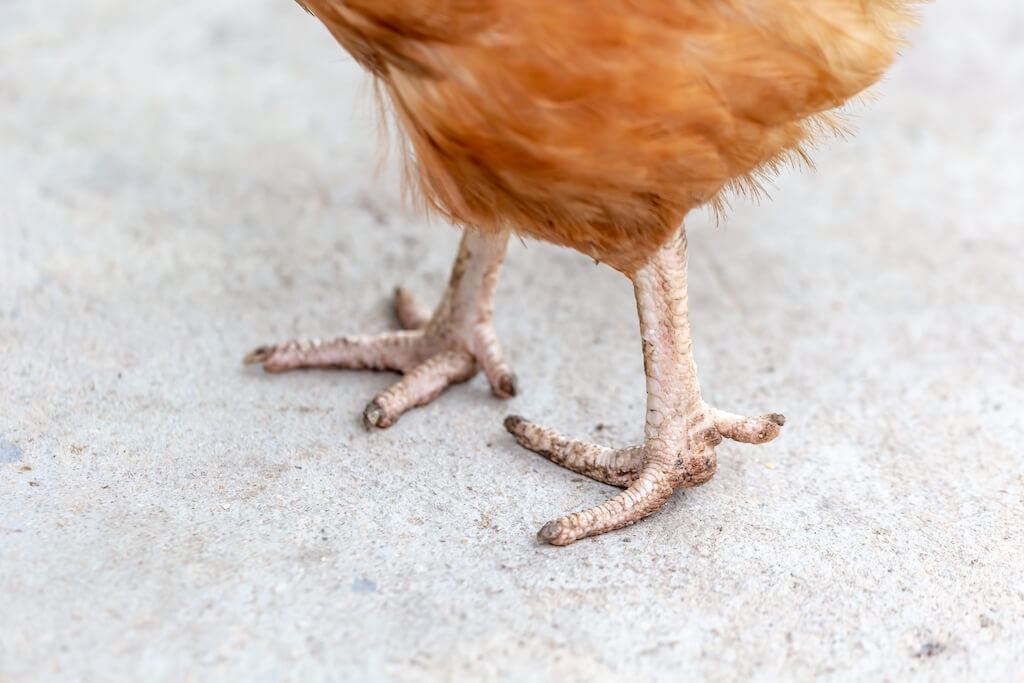Reducing pododermatitis for the chicken feet market
20/04/2023
Pododermatitis is not only a broiler welfare issue, but it also means producers lose out on a potential market. The export of chicken feet makes for good business, one that certainly adds to profit margins. For these reasons, broiler producers should focus on reducing pododermatitis, which simultaneously optimizes performance. Better litter quality and gut health have not only been shown to improve broiler performance, but also litter condition and footpad scores.
I – Pododermatitis, a multifactorial issue
Pododermatitis (footpad dermatitis or FPD) is an inflammation of the skin located on the basal part of a chicken’s foot. Necrotic lesions, with or without infection, may also be present. It can lead to lameness and poor performance. The causes of pododermatitis are multifactorial and can therefore be an indicator of farming conditions – hence welfare status. The prevalence of pododermatitis is included in some countries’ (Sweden, Denmark) welfare regulations, as well as in the evaluations of certain food retailers (like McDonalds). The EU recognizes pododermatitis as a marker of animal welfare and EFSA is putting pressure on integrators to reduce scores. This condition is often associated with poor litter quality and high stocking density in broiler houses. There are numerous causative factors which affect fecal content, litter quality or integrity of the skin. Feed formulation, gut health, and environmental conditions all influence the feces. They affect microbial load as well as the protein and water content; which in turn, influences ammonia production, and bacterial and toxin loads. Other factors that play a role in the overall quality of the litter include litter material, humidity of the house, management, and biosecurity on the farm. Apart from environmental factors, the robustness of the skin also depends on other factors, such as genetics, vitamin and mineral status, amino acid levels, gut health and any issues with collagen synthesis.
Broiler processing plants may simply dispose of chicken feet as waste, or some may be used in pet food. In terms of human food, there is a significant market for chicken feet in China, Taiwan, and Hong Kong. China alone imports 300,000 tons per year, with a value of US$ 450 million. There is additional demand coming from the rest of Asia, as well as Central and South America, e.g., Mexico and Peru. When feet have a severe form of FPD, they are downgraded, and their market value is decreased. 99% of downgraded feet are due to FPD.
PLEASE ENTER YOUR EMAIL TO ACCESS ALL CONTENT AND DOWNLOADS WITH ONE LOGIN
Hi ,
Please fill in your contact details to access all articles with just one login.




